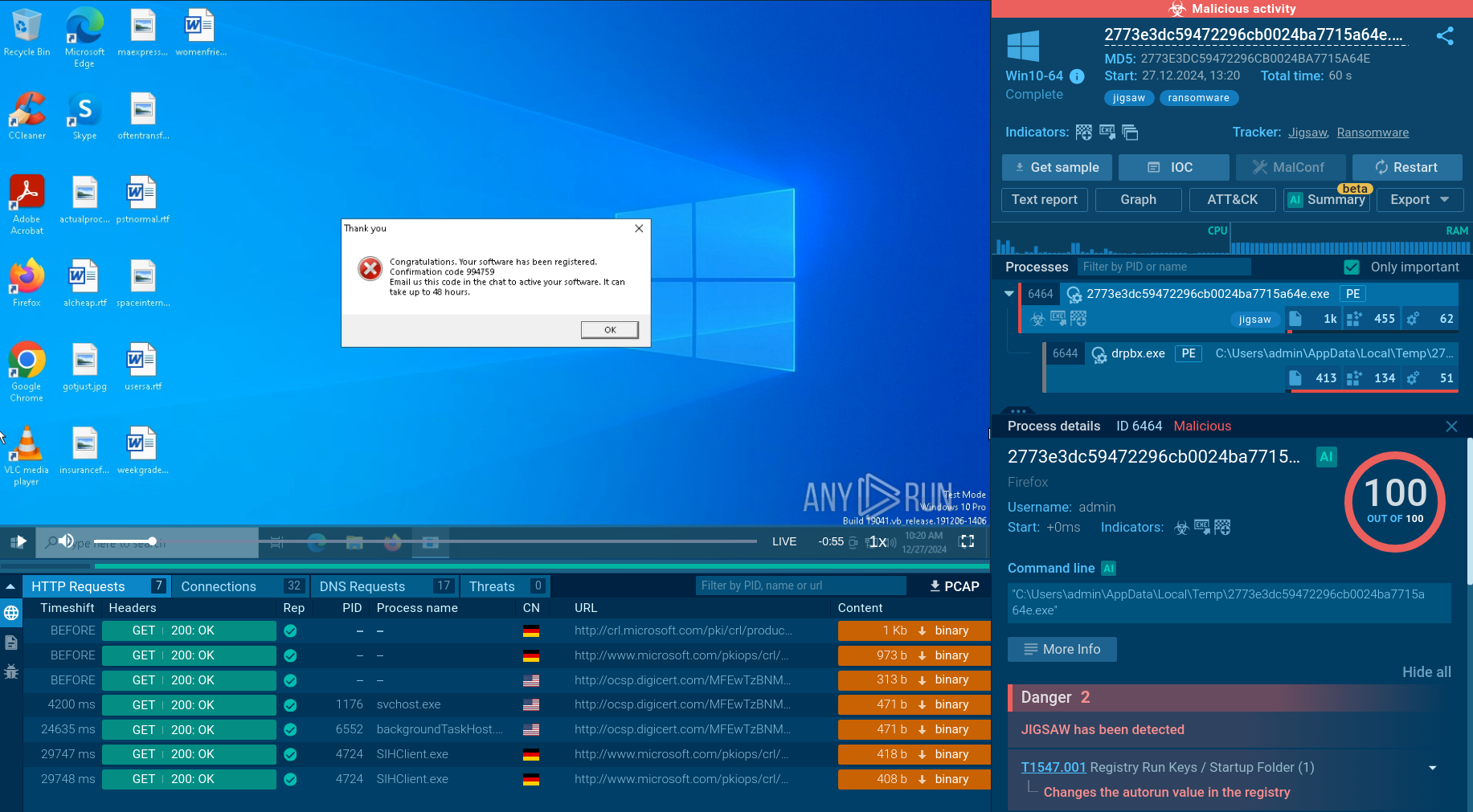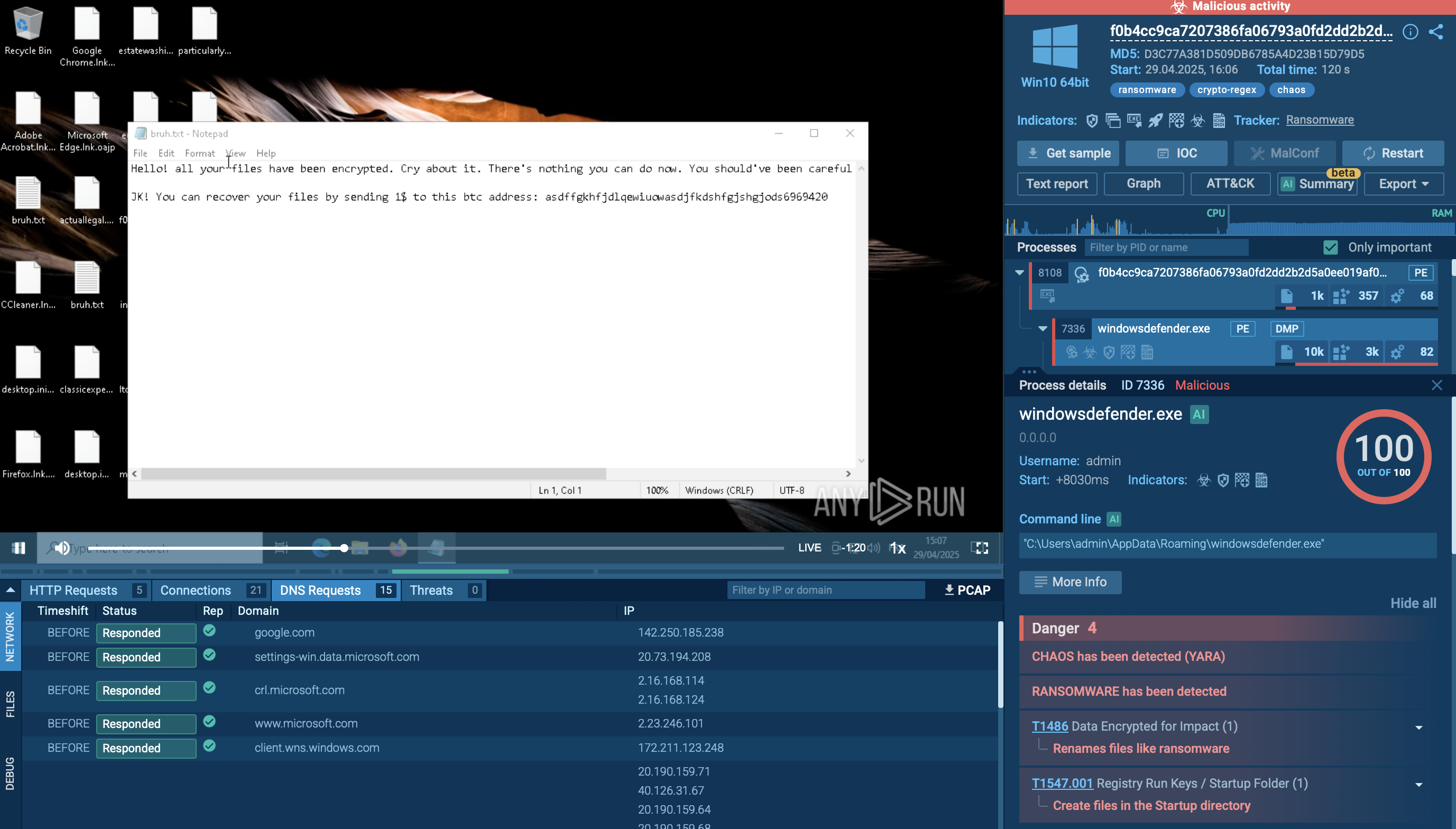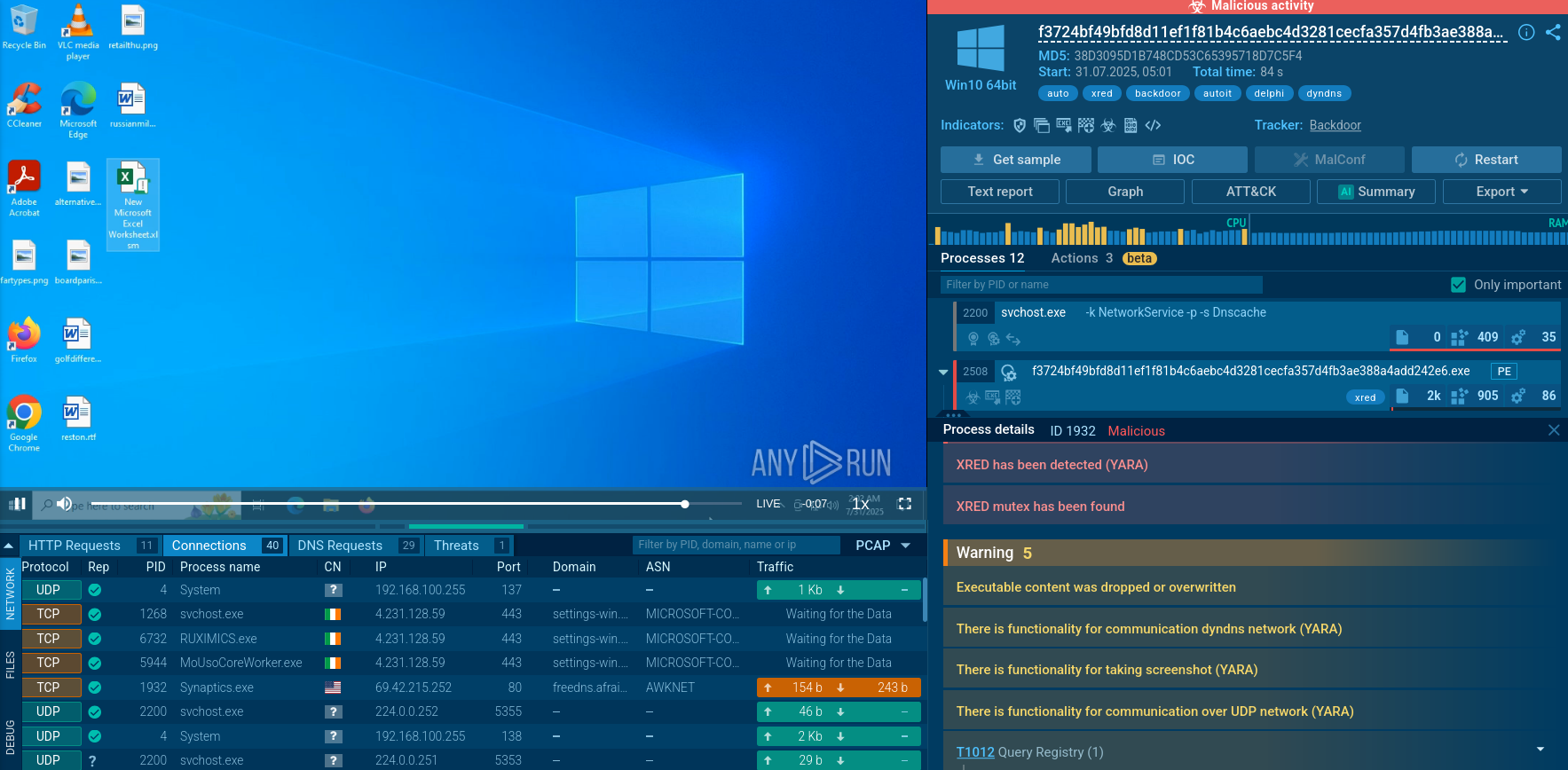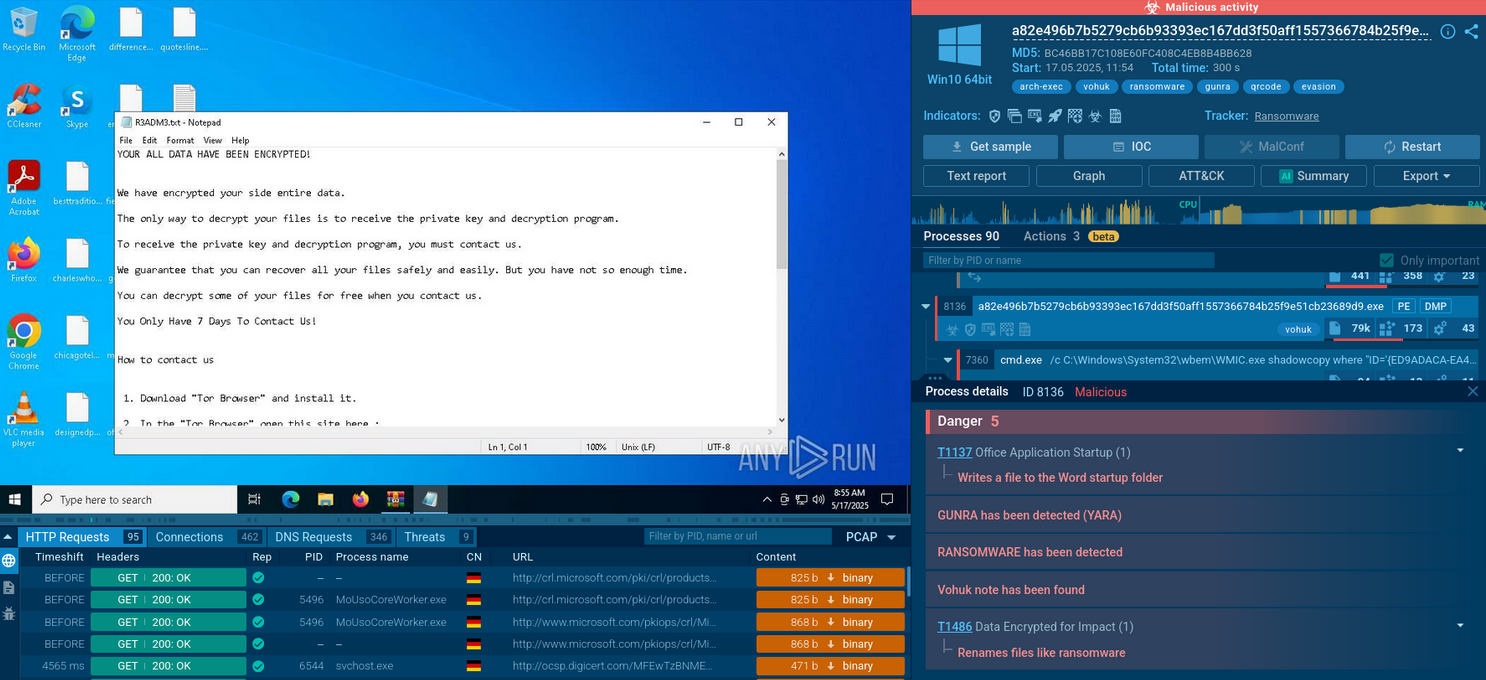Webinar
February 26
Better SOC with Interactive Sandbox
Practical Use Cases


LokiBot was developed in 2015 to steal information from a variety of applications. Despite the age, this malware is still rather popular among cybercriminals.
|
Stealer
Type
:
|
ex-USSR territory
Origin
:
|
|
3 May, 2015
First seen
:
|
10 January, 2026
Last seen
:
|
|
Type
:
|
ex-USSR territory
Origin
:
|
|
3 May, 2015
First seen
:
|
10 January, 2026
Last seen
:
|

 683
683
 0
0

 588
588
 0
0

 1142
1142
 0
0
LokiBot, also known as Loki-bot or Loki bot, is an information stealer malware that collects credentials from the most widely used web browsers, FTP, email clients, and over a hundred software tools installed on the infected system. It was developed in one of the ex-USSR countries.
The trojan was discovered for the first time on May 3rd, 2015, from a sale announcement made by the creator, and the malware is still active to this day.
Initially created and sold by a hacker known as "lokistov" or "Carter," the first versions of LokiBot spyware used to cost up to $400. However, almost identical malware appeared on hacker forums soon after, available for as little as $80 from several sellers. As it is thought, "lokistov" himself was hacked, and the virus's source code was leaked, allowing others to use its techniques and sell remarkably similar malware.
Curiously, a researcher subsequently found out that the first version of the virus got patched by someone without accessing the source code, which gave the hacker community the ability to set a series of individual domains used to receive the retrieved data.
Even though several versions of the virus exist today, after the analysis, it was found that all of them are actually modifications of the original malware. Interestingly, the server to which LokiBot stealer sends data is unique for every particular malware sample.
In the latest versions of LokiBot, a third stage is added to the process of compromising systems, besides more encryption, a technique to escape detection. Each layer of the trojan is encrypted to attempt to hide the eventual source of code.
The malware uses the known technique of blurring images in documents to force users to enable macros. This trick infects machines quite successfully.
An analysis session displaying the simulation of the contamination process created by the ANY.RUN interactive malware hunting service provides the perfect opportunity for malware analysis to see how the contamination process unfolds on an infected machine. As shown in the simulation, LokiBot trojan needs email attachments, such as a Microsoft Office file or an archive file to be opened to enter an active phase.
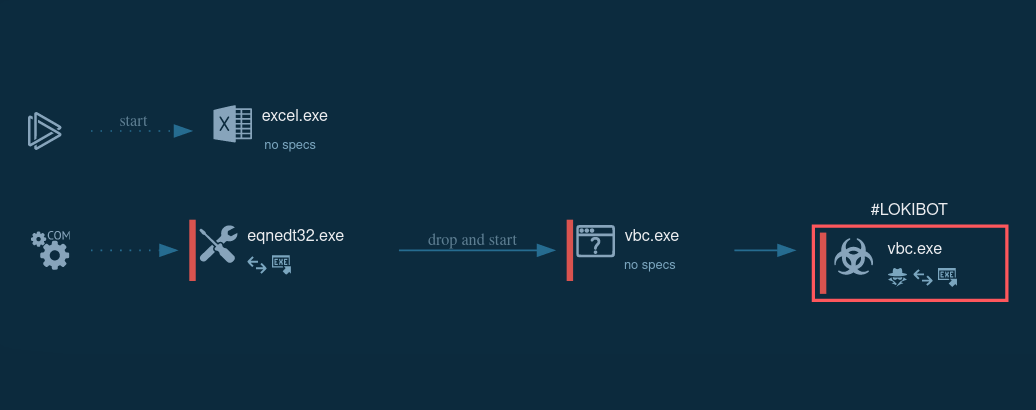 Figure 1: Process graph generated by the ANY.RUN malware hunting service
Figure 1: Process graph generated by the ANY.RUN malware hunting service
During the analysis, we found out that the malware life cycle can be broken down into the following stages:
Since LokiBot spyware requires macros to be activated to infect the system, attackers will do everything in their power to make the victim enable them. Thus keeping macros turned off is the best bet to stay protected from the trojan. Notably, extra caution should be exhibited when a document downloaded from a suspicious source or an unknown email address prompts to enable macros.
Also, having antivirus software from trusted developers and keeping it updated is an excellent way to decrease the probability of becoming the malware's victim and protecting credentials. Another good common practice is to be highly mindful when opening attachments or clicking links in emails from unidentified sources as it's a popular method of malware spreading, including FormBook and Dridex.
LokiBot stealer is distributed mostly via mail-spam campaigns, prompting the user to download a malicious file that is attached. Remarkably, the three most commonly used types of files are Microsoft Office documents configured to begin the download and installation processes of the malware, archive files containing a Loki-Bot executable or ISO files, and a Loki-Bot executable.
Interactive sandbox simulation conducted on the ANY.RUN malware hunting service allows us to take a closer look at how the execution process of LokiBot unfolds in a case when a contaminated Microsoft Office file is the infection source.
 Figure 2: Illustrates the execution processes of LokiBot as shown by ANY.RUN simulation
Figure 2: Illustrates the execution processes of LokiBot as shown by ANY.RUN simulation
 Figure 3: A text report created by ANY.RUN
Figure 3: A text report created by ANY.RUN
The virus generates multiple artifacts during its execution process. Particularly, four types of files can be simultaneously stored in the secret %APPDATA% directory at any point in time. Those files can have ".exe," ".lck," ".hdb" or ".kdb." extensions, and each file type is used for a specific purpose:
Based on the analysis, the keylogger uses the following algorithm to name the files:



To communicate with the C&C server, the patched version of the virus, which is also the most widely spread strain, sends a "ckav.ru" string. Interestingly, the sent data is also is a substring of "fuckav.ru."
Among other things, you can detect whether it is LokiBot in front of you or not by looking inside sending packets - there's always text "ckav.ru" inside them. Just click on the sent packet in the "HTTP REQUESTS" tab and take a look inside a packet.
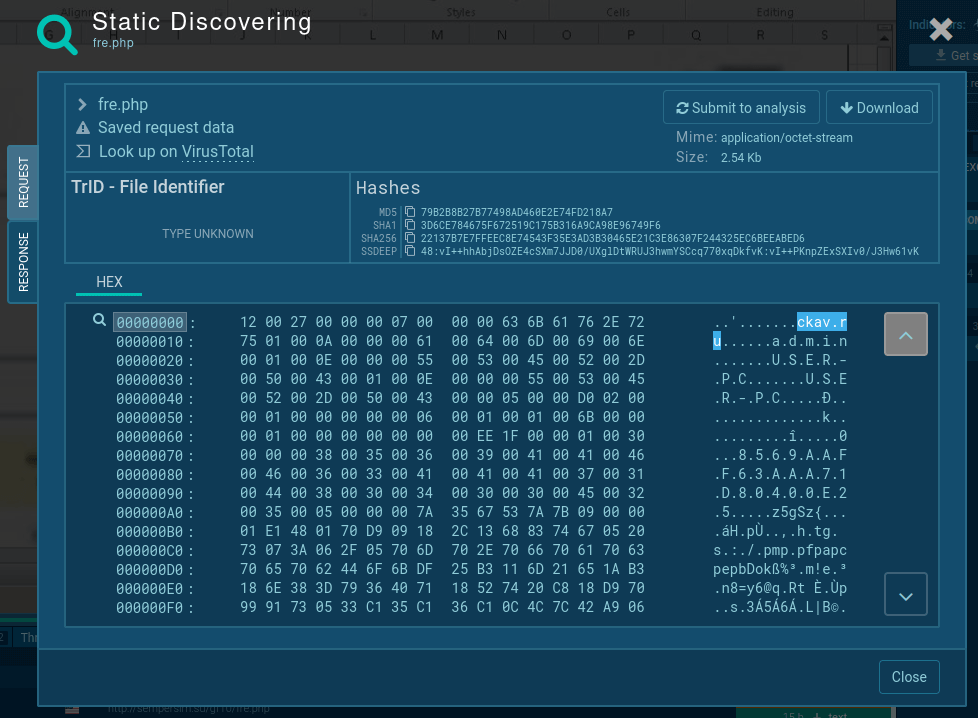 Figure 4: Lokibot network stream
Figure 4: Lokibot network stream
Lastly, since the first version of the malware was leaked and cloned, eventually becoming available for a significantly lower price than the original, LokiBot spyware became a widely spread malware that continues to appear in several mail-spam campaigns. In fact, the virus has become so popular that its set-up explanation videos on stealing credentials are publically available on YouTube.
Fortunately, modern malware hunting tools like ANY.RUN provides the ability to examine the malware behavior in detail and establish solid protection against the hazard.
Create your free ANY.RUN account today and enjoy unlimited malware analysis!
